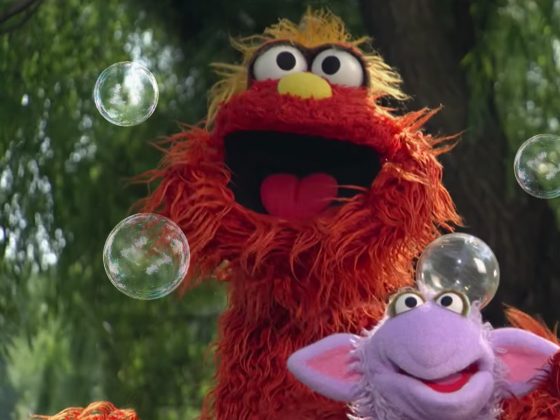
Don’t Pop the Bubbles
Learn about experiments while blowing bubbles.
Together, watch Murray observe bubbles popping as he tries to catch them. His teacher suggests setting up an experiment to learn if anything can prevent a bubble from popping. They test on wet hands, soapy hands, dirty hands, garden gloves, aluminum foil…and get different results! After watching, ask:
- “Murray made an observation in the beginning of the video. What did he observe?”
- “In the experiment, what did Murray and the children change?”
- “What helped everyone to catch the bubbles without popping? Why do you think that worked?“
You can do a similar experiment with bubble solution and a wand:
- Invite children to observe and touch newspaper and wax paper. Say, “Now let’s make a hypothesis. Which paper do you think the bubbles can land on without popping—the newspaper or the wax paper?” Have children raise their hands to show what they think.
- Tally the results, and point out which hypothesis got the most votes.
- Blow bubbles and let them fall onto each material. Tally the number of bubbles that stay on each material without popping.
- Finally, compare the two sets of data. Ask, “Which material was the best for catching bubbles without popping? Why do you think the bubbles were less likely to pop on that material?”
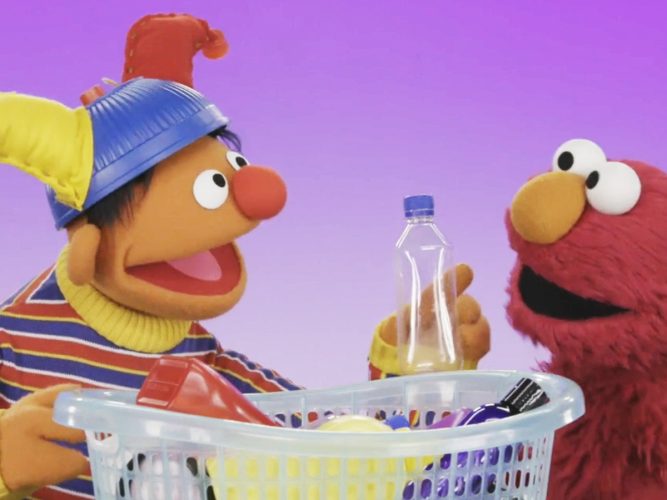
Reuse!
Ernie shows Elmo ways to turn a used water bottle into art.
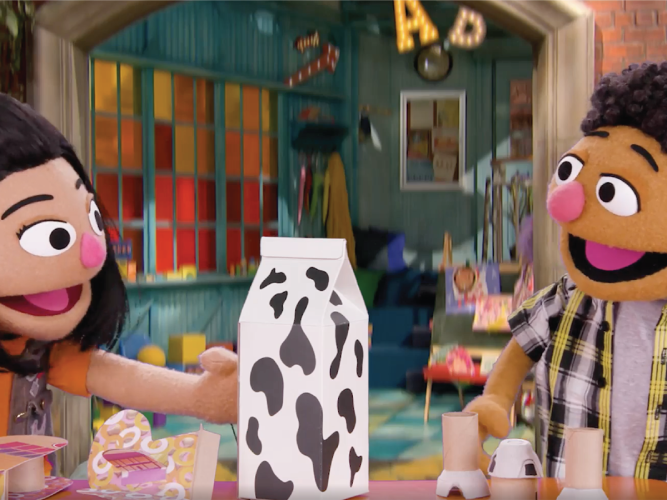
Ji-Young and Tamir Build a Robo-plane
A video about teamwork and sharing.
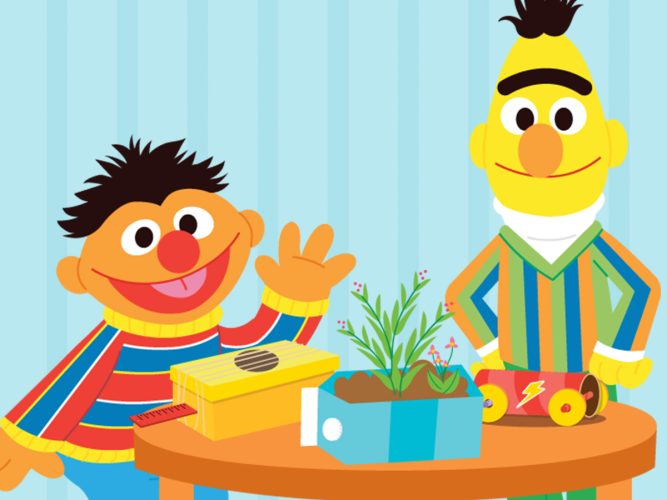
Bert & Ernie Reuse & Reinvent!
An interactive game about upcycling.
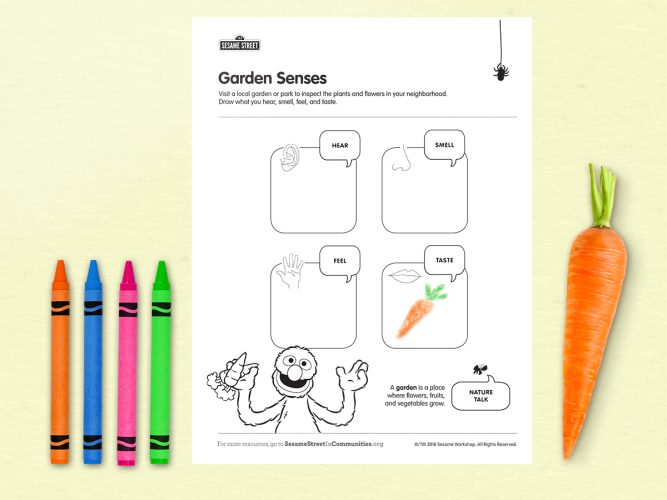
Garden Senses
Screen-time can help families learn and connect, and taking screen-time breaks can, too.
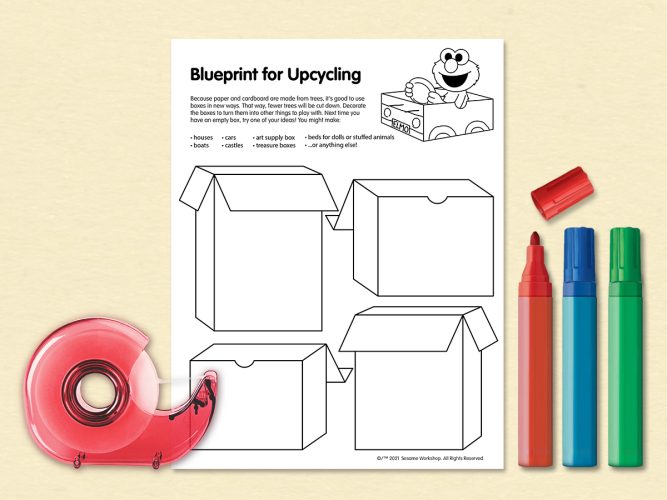
Blueprint for Upcycling
An activity page about upcycling.

Questions, Questions!
An article about using children’s questions as a springboard into playful learning.
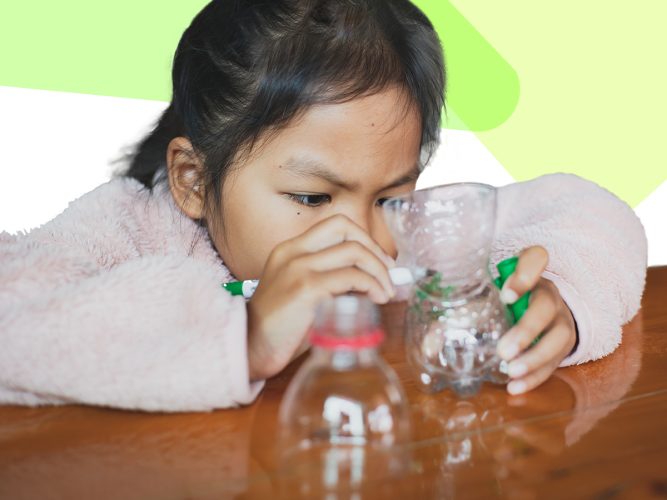
Upcycling Crafts
An article about upcycling projects.
